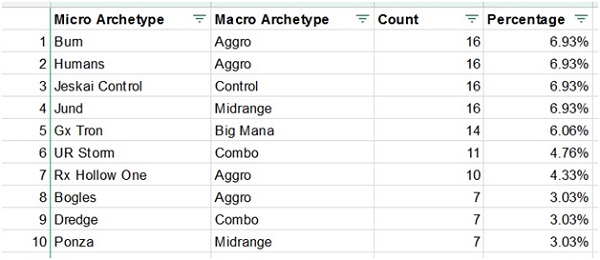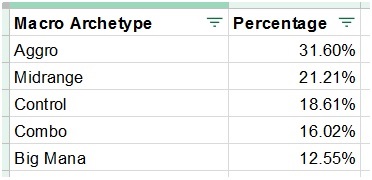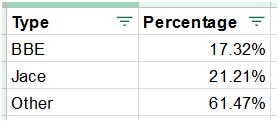About a month ago Wizards of the Coast announced what had the potential to be one of the biggest shake ups in the Modern metagame in a long time:
Jace, the Mind Sculptor and Bloodbraid Elf were no longer caged by the banlist.
There were a lot of fairly outspoken reactions to this. People by and large hate change -- especially changes that threaten something they really enjoy. More than a few called these unbannings as being something that would ruin Modern -- claiming the format would become about Jace and only Jace before long.
Since the unbannings, things have started to calm down some. People are getting their heads on straight and actually playing with the new cards instead of just yelling about the sky falling. So what does the format actually look like after a few weeks of playing with these new and powerful cards? Today we are going to take a look at it.
First -- as I have discussed a few times on my column here though -- Magic data is hard to dig into in an objective manner. This is even more true when it comes to trying to construct pictures of a broad format metagame. This is because our best source of data for knowing what people are successfully playing is intentionally incomplete. For those who are unfamiliar, this piece describes how Wizards of the Coasts chooses which successful decks are posted from Magic Online data.
Specifically WOTC only shares deck lists that are at least 20 cards different from all the other decks that are posted with that same data. This means that even if there are 100 copies of the same deck going 5-0 each week, only one of them will be posted. This allows formats that are unhealthy to appear artificially diverse.
This intentional skewing makes Modern metagame samples you see posted on sites like MTGGoldfish and MTGTop8 useless for determining if the successful decks in a format are diverse at a glance.
Thankfully we can still build our own more complete data by manually removing the MTGO information. For today I have composed data of the best performing decks at a number of events that have occured since the unbannings happened. Specifically the numbers I am going to look at here today come from:
- 4 MTGO Challenge Events (32 list from each, generally 8~ rounds of swiss)
- 2 SCG Classics (16 lists from each, 8 and 9 rounds of swiss)
- 1 SCG Open (32 lists, 15 rounds of swiss)
- Hunter Burton Memorial Open (8 lists, 9 rounds of swiss)
- 2 Hareuya Modern Cups (15 lists, 7 rounds of swiss)
- Dutch Open Series (8 lists, 8 rounds of swiss)
- Nerd Rage Gaming CT (8 lists, 7 rounds of swiss)
For those counting that makes for a total of 231 deck lists that are being included in my sample data today. Things worth noting as I discuss some of the finer points of the data I am using:
- I did not make a distinction between Top 8, Top 16, Top 32, or final event placement
- One of the Hareuya cups was missing a Top 8 list on MTGTop8 so I have an odd number of lists
- I intentionally skipped including data from smaller events. The smallest event included in this data set is a 7 round Hareuya cup. After this everything else had 100+ players
- Modern is a format with a lot of different decks in it. Because of this I was somewhat liberal in combining decks under one name. For example "Blue Moon" includes all

 Moon decks regardless of if they have a combo finish or not.
Moon decks regardless of if they have a combo finish or not. - I did not include decklists from the MTGO Championship event. Even though this is a high profile event it was a small field event which makes the numbers wonky compared to large open field events.
Even with my fairly aggressive grouping of decks that were close to the same, my 231 decklist data set had 56 different decks contained within it that had been successful at recent Modern events. Of these 56 archetypes, 10 of them posted 7 or more successful finishes:

If you went back in time and showed me the above data before letting me know that Bloodbraid and Jace were legal I would not have been that surprised by it. For all the hype these format ruining cards got from some people, they seem to only be making small splashes so far. Specifically only one of these 10 best performing archetypes plays Jace, the Mind Sculptor and only two are playing Bloodbraid Elf.
Most importantly none of these best performing archetypes has anywhere close to an overbearing representation of top finishes. The format at a glance appears to be more diverse than ever.
Looking beyond this Top 10 listing there were 35 decks in total that posted more than a single strong finish in the last week. This means there were another 21 decks that had a single copy in our data. Because Modern is so diverse, when trying to prepare for a large event it can often be useful to think about the format in more generic terms. By assigning every deck in my data set a "Macro" or "Generic" archetype like I did above we get the following breakdown among the 231 decks I included in my data:

This really paints a picture of our current Modern format not only being diverse in terms of the decks that see play, but also in terms of generic archetype diversity. Keep in mind that some of the grouping I did here is very much subjective as many decks in Modern can fall into more than one of the above categories. To see how I classified decks under the different Macro archetypes see the link to my full data at the end of this article.
The last metric to look at from our data is how many decks in total are playing the cards Jace and Bloodbraid. As one person I saw hyping the downfall of Modern put it -- has the format become "Duel decks Jace VS BBE"? Let's look shall we:

Overall these numbers seem more than acceptable to me.
For some context, according to MTGTop8, other Modern format staples like Lightning Bolt see play in a whooping 41% of decks while flexible threats like Scavenging Ooze and Snapcaster Mage see play in 19% and 14% of decks respectively. This means that while Bloodbraid and Jace seem to, unsurprisingly, be competitive in Modern, they do not seem to be any more overbearing that other cards we are used to calling format staples.
Comparing My Sample with MTGO Data
Since I went through the trouble of scraping through all of this data by hand I thought it would be a bit interesting to include a comparison to my data that doesn't included the incomplete MTGO data to some that does. At a glance the top decks do not look that different between the two. For instance here are the Top 4 decks according to MTGGoldfish as of my writing this on 3/13/2018:

Three of these are the same as my top four lists and the one that is missing from my top four is my fifth most represented:

The important difference between the two though is the listed metagame percentage. Because the MTGO data does not include duplicate deck data it takes the metagame percentages of all of the popular decks and skews them downward. In the case of some of these archetypes the predicted metagame share is almost half of what it is when we removed the intentionally incomplete sampling of MTGO 5-0 lists.
In a way this makes me feel a bit better about the incomplete data. The end result of being able to glace and see which decks are best performing is still there, even if the specifics of exactly how well those decks are doing is skewed more a little bit.
Wrapping Up
The most important thing to keep in mind from all of this is that we are still early into the format. While we have had a number of swiss events that scaled based on their size, we have only had one "Grand Prix" style event since the unbannings happened.
That being said -- our early data looks great. The format is arguably more diverse than ever with midrange / control decks gaining powerful new tools. For me personally these changes have made Modern my own personal favorite format again. This current iteration of the format is also quickly approaching my favorite Modern of all time in terms of the quality of games generated on average.
What has your experience been in Modern since Jace and Bloodbraid became legal again? Have you been enjoying yourself? Are you playing one of the powerful cards or using something else to attack the format? Let me know in a comment below!
Cheers,
-- Jeff Hoogland
Full Data Tallies in a Google Spreadsheet


























